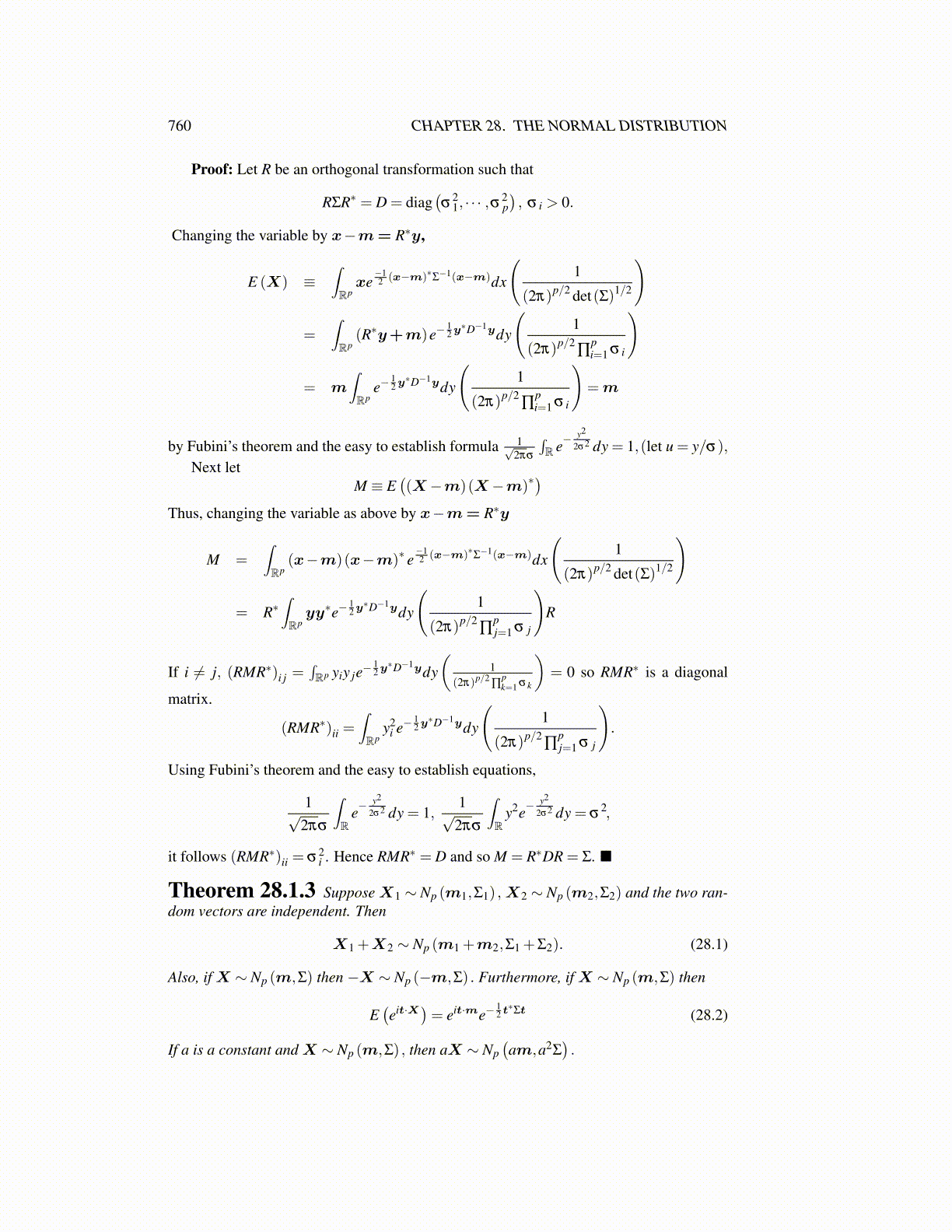
760 CHAPTER 28. THE NORMAL DISTRIBUTION
Proof: Let R be an orthogonal transformation such that
RΣR∗ = D = diag(σ
21, · · · ,σ2
p), σ i > 0.
Changing the variable by x−m= R∗y,
E (X) ≡∫Rpxe
−12 (x−m)∗Σ−1(x−m)dx
(1
(2π)p/2 det(Σ)1/2
)
=∫Rp
(R∗y+m)e−12y∗D−1ydy
(1
(2π)p/2∏
pi=1 σ i
)
= m∫Rp
e−12y∗D−1ydy
(1
(2π)p/2∏
pi=1 σ i
)=m
by Fubini’s theorem and the easy to establish formula 1√2πσ
∫R e−
y2
2σ2 dy = 1,(let u = y/σ),
Next letM ≡ E
((X−m)(X−m)∗
)Thus, changing the variable as above by x−m= R∗y
M =∫Rp
(x−m)(x−m)∗ e−12 (x−m)∗Σ−1(x−m)dx
(1
(2π)p/2 det(Σ)1/2
)
= R∗∫Rpyy∗e−
12y∗D−1ydy
(1
(2π)p/2∏
pj=1 σ j
)R
If i ̸= j, (RMR∗)i j =∫Rp yiy je−
12y∗D−1ydy
(1
(2π)p/2∏
pk=1 σ k
)= 0 so RMR∗ is a diagonal
matrix.
(RMR∗)ii =∫Rp
y2i e−
12y∗D−1ydy
(1
(2π)p/2∏
pj=1 σ j
).
Using Fubini’s theorem and the easy to establish equations,
1√2πσ
∫R
e−y2
2σ2 dy = 1,1√
2πσ
∫R
y2e−y2
2σ2 dy = σ2,
it follows (RMR∗)ii = σ2i . Hence RMR∗ = D and so M = R∗DR = Σ. ■
Theorem 28.1.3 SupposeX1 ∼ Np (m1,Σ1) ,X2 ∼ Np (m2,Σ2) and the two ran-dom vectors are independent. Then
X1 +X2 ∼ Np (m1 +m2,Σ1 +Σ2). (28.1)
Also, ifX ∼ Np (m,Σ) then −X ∼ Np (−m,Σ) . Furthermore, ifX ∼ Np (m,Σ) then
E(eit·X)= eit·me−
12 t∗Σt (28.2)
If a is a constant andX ∼ Np (m,Σ) , then aX ∼ Np(am,a2Σ
).